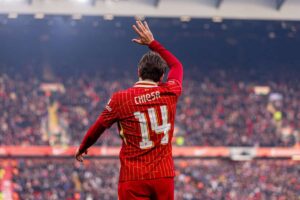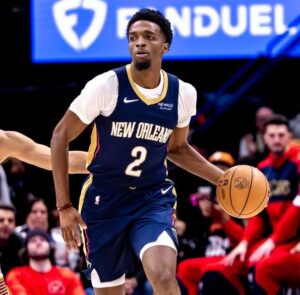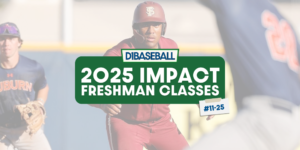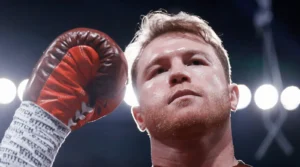
In the early 2000s, the Oakland Athletics’ marketing department rolled out a promotional campaign that played on the team’s ubiquitous single-letter nickname. Billboards appeared throughout the Bay Area with images of the A’s squad, each one emblazoned with bold, white font stating “There’s No A in Give Up,” or “There’s No A in Ego”:

Over the course of several years, that basic format was toyed with in various creative ways. When I attended Jason Giambi’s first game back in Oakland donning Yankee pinstripes, I spotted several “There’s No A in Sellout” signs throughout the stands. A few years later, tee-shirts asserting that “There is an A in Streak” were unavoidable in the East Bay. But now, that once-fun ad campaign feels like a punch to the gut, as the Oakland fanbase reckons with the reality of a Coliseum with no A’s in it.
…
I can’t remember the first time I attended an A’s game at the Coliseum. I would imagine it’s a relatively common phenomena for lifelong sports fans whose experience of watching their favorite team’s home games pre-dates their ability to organize memories into chronological order. But going back to the mid-90s, I’d wager there are few places I’ve spent more time. One of my most cherished memories is of walking the warning track with my little league team when I was 10 years old, feeling like quite the big shot:

But while the past may be foggy, I’m confident that I’ll never forget my last A’s game at the Coliseum. The last A’s game at the Coliseum. To say that my experience attending last Thursday’s game was memorable for the game itself would be false. Instead, my trip to the beloved concrete behemoth was an exercise in revisiting the decades of memories I’ve built there throughout my life, finding them in every corner of the ballpark.
…
As it so often has over the years, the day started on BART. My husband Dave and I hopped on the train in El Cerrito around 9 am and watched from our seats as more and more A’s fans boarded at each stop. By the time it reached Fruitvale, the last stop before the Coliseum, the train car was jam-packed. Fans were sporting A’s jerseys from throughout the team’s history in Oakland; on our car, I spotted jerseys embroidered with the names of franchise heavys like Rickey Henderson and Vida Blue, scattered among less well-known names like Jason Kendall and Jack Cust. But just in case I was tempted to let myself get too caught up in nostalgia, the crowd was dotted with a significant number of the now-iconic Kelly green “SELL” t-shirts, which served as a sobering reminder of the game we were all heading to.
As the train clacked and clanged along the tracks in its final approach to the much-maligned stadium, a hush fell over its occupants. We all stared out at the horizon as the ballpark came into view. Some of us pulled out our phones, as though capturing this moment was somehow important. As though the stadium was being demolished, rather than abandoned, by our once-beloved franchise. I thought back to the excitement I used to feel whenever I’d reach this part of the BART trip. Jockeying for position near the train’s doors in hopes of beating the throng of fellow fans to the narrow stairwell on the station platform, racing toward the turnstile. I couldn’t feel that excitement anymore; my eyes begin to sting as I stepped off the train.
The stadium is connected to the BART station by a concrete walkway caged by a curving fence. Along the sides of this chain link tunnel, vendors have long set up folding tables covered with A’s (and/or Raiders) merch. Some of my earliest Coliseum memories feature the chorus of vendors barking out their prices. As I made my way toward the stadium, I thought back to a night game circa 2002, when a bevy of vendors were all hawking t-shirts and hats for a flat rate of $5, until I reached one enterprising vendor cutting through the cacophony with the low-low price of $4.98 (but also adding, at a lower decibel, that he offered no change).
As I got closer to the ballpark’s entrance, I saw the ticket office, all but empty thanks to the game having long been sold out, and the fact that most folks have digital tickets on their phones. But the image of the ticket window flooded me with memories of fishing out my high school ID to prove I was under the age limit for discounted $4 bleacher tickets. The long lines of fans at every gate, all seemingly waiting with a strange combination of mourning and eagerness to enter the stadium, recalled showing up hours early for bobblehead giveaways.
Dave and I walked the perimeter of the stadium before getting in line, and as we passed by the overflowing parking lot, we caught whiffs of charcoal and weed wafting over the various groups of early-morning tailgaters; I thought back to countless games when I’d been amongst them. When we finally did get in line, the man in front of us was wearing a customized A’s jersey with the word CHAMPIONS embroidered where a player’s last name would normally be, the word arching over the number 89. I was struck by the finality of that 1989 Bay Bridge Series now officially earning the designation of the Oakland A’s last World Series title.
Once inside the concrete confines, we walked a short distance in the lower concourse, weaving our way through a thick crowd of like-minded early arrivers. Eventually, we climbed to the upper concourse, where the crowds weren’t quite so dense, and I thought back to all the times I’d scaled these cement stairs, either on my way to nosebleed seats, or to scope out the stands for available seats that I could conceivably sneak into. I remembered going up and down the aisles after games ended, scouring the rows for souvenir cups that other fans had left behind and collecting them in big stacks to bring home with me.
As we passed by the concession stands, many still shuttered, I tried to calculate how many nachos I’ve consumed here. How many beers? How many hot dogs? I thought back to sitting in the stands as a kid, hoping the chocolate malts guy would come to my section. I could hear the sounds of heavy-footed vendors trudging up the stairs. One cold night, I remember hearing a man with a tray of steaming cups yelling “Hot chocolate!” while making his way through the section, then transitioning to “Warm chocolate!” as the wind picked up a bit, until he was down to just a couple of cups, yelling “Chocolate milk! Get your chocolate milk!” I thought about the pizza vendor who had such a uniquely melodic phrasing when he’d shout “PEP-peroni pizz-AAAAAAA! Hey, pizza here!” that for a several-season stretch, any time he’d enter the left field bleachers, the entire section would sing it along with him.
Dave and I passed through the Connie Mack Club, and stopped by the suite we had reserved for the morning after our wedding six years ago, reminiscing about how fun it had been to get our Midwest-based softball team, most of whom had never been to Oakland, let alone the Coliseum, out to the game.

We spent the remaining time before the game soaking in these memories and perusing the plaques and other tributes to A’s history scattered throughout the ballpark, before eventually settling into our second-level seats above the A’s on-deck circle. Footage from the 1972 World Series was playing on the big screen, followed by a sequence of commercials put out by the A’s over the years, all of which brought back memories of either doing my math homework with the A’s on in the background throughout my school years, or of my friends sending me clips of more recent ad campaigns when I wasn’t living in the region and couldn’t catch them during game broadcasts.
I took in the sight of the teams warming up on the field, with plenty of press lining the warning track. I looked up at the broadcast booth, with a dedication to long-time A’s radio host Bill King, whose voice, to me and other A’s fans who remember him, is the undisputed Voice Of Baseball on the radio.

The ceremonial first pitch was a two-hander, featuring both Dave Stewart and Rickey Henderson, and the national album was appropriately (if somewhat hilariously) delivered by former A’s pitcher (and Masked Singer alum) Barry Zito. Just before the A’s took the field, a video played on the big screen that started with the words “Dear Oakland Coliseum” in long-time A’s broadcaster Ken Korach’s familiar timbre:
I’d gotten misty eyed throughout the preceding hours, but this is when I first burst into tears.
The game began with many of us still sniffling. The first hitter was the Rangers Marcus Semien. Semien is a hometown favorite who grew up in the East Bay and represents one of the more recent sad farewells that A’s fans have had endure, a fan favorite dealt elsewhere by a club notorious for letting superstars leave. I leaned over to Dave and whispered, “I’m glad he’s here for this,” even though Semien was on the other team. When I showed up to this game, it was with both my scorebook and my regular notebook in hand, but my brain was too filled with emotions to think about taking notes, so I put it away and opted to focus on scorekeeping instead, allowing myself to soak in every additional wave of memory as it crested over me. In between jotting down the game’s play-by-play in my scorebook, I looked around and was overwhelmed as I scanned the park, section by section.
While it might not have been my first game, I remembered sitting in roughly these same seats the first time I was ever truly in awe of the sport. It was in May of 1996, when I was on hand to witness Ernie Young’s three-homer night. The next day, I excitedly relayed the feat to my little league teammates, who were equally awed, even by my sputtering retelling of it. Gazing down, I remembered countless games when section 128 was left unmanned by ushers, making it the ideal spot to sneak into during my teenage years. Looking down the first base line, I remembered sitting near the right field foul pole at a game in 2001 against the Red Sox. Johnny Damon hit a scorching liner down the line only for it to roll into and then become lodged in an empty beer cup that had fallen onto the warning track, turning what would’ve easily been a triple, if not an inside-the-parker for the speedy Damon, into a ground-rule double:
I spotted several other fans who were looking around, seemingly enduring the same flurry of emotions I was feeling. I overheard many of them lamenting the state of things, some feeling guilty as fans who hadn’t tried harder to attend games, others bitterly pointing out the ways they felt they were expressly discouraged from doing so by the team’s ownership.
I related more to the latter sentiment. Even forking over the cost of admission for this final game was a tough decision. Given the circumstances of their move, it was hard to stomach giving money to the team’s current ownership. John Fisher and his cronies, headed by Dave Kaval, inflated ticket prices for the final game at the Coliseum to a grotesque amount, an amount I initially balked at. But as someone with such a personal and deep-seated connection to the franchise, I couldn’t help but feel the need to bear witness to its swan song.
…
The game was without very many standout plays, aside from a diving catch by JJ Bleday in center field, but the goings on on the field were somewhat irrelevant. Don’t get me wrong: I kept score throughout, and that scoresheet has instantly become a prized possession. But what was happening on the game’s periphery is what will stay with me for years to come.
The afternoon was riddled with realizations of several lasts. This is the last dot race. This is the last Great Cap Caper. This is the last time a kid will try to “steal” third in between innings. This is the last foot race between the big-head mascots of Henderson, Dennis Eckersley, and Rollie Fingers (Rickey won, fittingly). This is the last time we’ll “root, root, root for the A’s” in our rendition of “Take Me Out to the Ballgame” during the seventh inning stretch.

And then there were the fans. There were signs aplenty, ranging from the wholesome to the tongue-in-cheek to those that were outright vitriolic toward John Fisher. The faces familiar to Coliseum regulars were in attendance. Krazy George Henderson, who famously originated the Wave at an ALDS game in 1981 against the Yankees, and the inimitable Banjo Man made appearances to roaring applause:

Late in the game, the A’s in-game host, Kara Tsuboi, who has been with the team since 2009, issued her own farewell to the fans on the big screen; at that point, I couldn’t tell if I was crying again, or if I had been the whole time (I was thankful for my dark sunglasses either way). I wondered what her next phase in life would include. I wondered what would become of the rest of the Coliseum staff who were suddenly out of a job.
The A’s won in the end, and standout closer Mason Miller was on the mound for the final out. His entry onto the field smacked me with a more recent memory of attending a game earlier this season. I was one of the very few fans remaining toward the end of the game (a weekday day game against the Cardinals). I watched him warming up that day, and before taking the field, he rolled the ball across the top of the bullpen roof toward me, and I reached past the protective netting to snag it. I thought about how Miller, a potential household name in the making, felt about representing this version of this team.
When Thursday’s game ended, manager Mark Kotsay stood in foul territory and addressed the crowd:
It was a fitting tribute to the team and the Coliseum, with Kotsay putting pointed emphasis on the word “Oakland” when referring to the Oakland Athletics. I thought back to when I bought a Mark Kotsay shirsey during his time as a player on the team. I’ve since worn that shirt out to the point of having to cut off the sleeves and relegate it to workout shirt status. When I bought it, I never would’ve imagined that it would be the piece of memorabilia in my collection with the greatest relevance a couple decades later.
It’s been said that grief can be charted in five stages: denial, anger, bargaining, depression, and finally, acceptance. But if the DABDA model is to be applied to what A’s fans are experiencing right now, then both A’s (no pun intended) stand for anger. How can we accept the pain that has been inflicted upon us by Fisher’s insistence on burning the bridge that connects us to our team? Especially when much of it has seemed targeted and intentional; when the experience of loss has been drawn out for so long.
Fisher has been notoriously reclusive during this entire process. When he has shown his face, he’s made a point of identifying himself as a Giants fan, and expressed excitement at watching his team’s pitchers give up homers to non-Athletics superstars. But lest that imply that he’s simply so detached from the affected fanbase as to not understand the hurt he’s inflicting, I implore you to recall the efforts he made in the 1990s to ensure that the Giants didn’t relocate to Tampa Bay. As a Giants fan, he knew how much that would hurt, so he went full Veruca Salt, urging his GAP-founder father to band together with other local investors to keep the team in San Francisco (he only divested from his ownership of the Giants when he set his sights on buying the A’s). In other words, he knows what he’s doing, and he knows who he’s doing it to, and exactly how painful it is. He just doesn’t care.
After Kotsay finished speaking, I stood in front of my seat, hugging my scorebook to my chest as I soaked in the Coliseum in for the last time. I took in the sights and sounds of closing time at baseball’s last dive bar. I watched as current players took their turns dabbing up Rickey Henderson. I watched Stomper, the A’s long-standing elephant mascot and a nod to the team’s storied history, a symbol of the franchise’s insistence on its quirks in the face of public mockery and scorn. As I watched the beloved pachyderm wave the Athletics colors, I wondered how he’d hold up in the Sacramento or Las Vegas heat, if he even got the invite. I watched as Max Schuemann swiped the flag from Stomper and stormed through the outfield with it, stopping only to wave it at the fans, most of whom were still standing stunned in front of our seats.
As we made our way back to the BART platform, we encountered a logjam at the entrance to the walkway. I overheard people haggling over the promotional giveaway item – a replica of the Coliseum that was only handed out upon exiting the stadium, forcing fans to choose between securing the souvenir and staying until the final out. I overheard tipsy 20-somethings discussing how they almost got away with stealing the cupholder from their seats before security caught them in the act. I overheard reflective chants of “Let’s Go Oakland,” and futile ones of “Sell the Team.” I overheard a lot of muffled tears. And of course, I heard the vendors with their $5 wares, only this time the merch was emblazoned with phrases like “The Last Game,” and “1968-2024,” and of course “SELL,” in big, white font.

The train ride home started on a jam-packed car, bursting at the seams with green and gold. As the train made its way through Oakland and then Berkeley, the crowd thinned as now-former-A’s fans made their way back to their respective homes in the East Bay. When we reached our stop near the end of the line, there was just one other fan decked out in A’s gear – an older man with a vintage A’s cap, studded with pins he’d collected over the years. As we crossed the BART parking lot and headed back to our car, I heard someone call out to the man asking who won the game. “The A’s did,” he said, and as the stranger offered him a high five, I thought about how former A’s player Glenn Burke has often been credited for inventing the gesture.
I wonder when everything around me will stop reminding me of the A’s. And I wonder when thinking about the A’s will stop being painful and go back to being comforting. I wonder when (if ever) Oakland will get another major league team to call its own. The answer is unknowable for now. It may be never. But the impact that A’s fandom has had on my life will never disappear.






